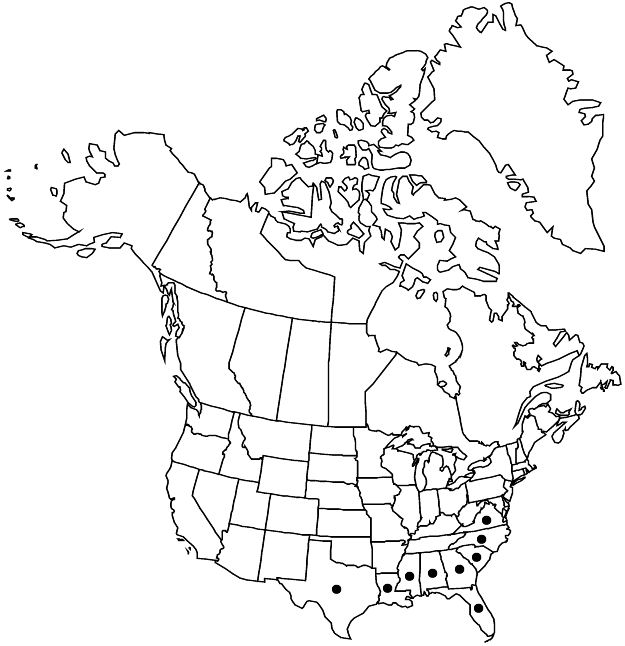Difference between revisions of "Euphorbia bombensis"
Enum. Syst. Pl., 22. 1760.
FNA>Volume Importer |
imported>Volume Importer |
||
| (6 intermediate revisions by 2 users not shown) | |||
| Line 12: | Line 12: | ||
|name=Chamaesyce ammannioides | |name=Chamaesyce ammannioides | ||
|authority=(Kunth) Small | |authority=(Kunth) Small | ||
| − | }}{{Treatment/ID/Synonym | + | |rank=species |
| + | }} {{Treatment/ID/Synonym | ||
|name=C. bombensis | |name=C. bombensis | ||
|authority=(Jacquin) Dugand | |authority=(Jacquin) Dugand | ||
| − | }}{{Treatment/ID/Synonym | + | |rank=species |
| + | }} {{Treatment/ID/Synonym | ||
|name=C. ingallsii | |name=C. ingallsii | ||
|authority=Small | |authority=Small | ||
| − | }}{{Treatment/ID/Synonym | + | |rank=species |
| + | }} {{Treatment/ID/Synonym | ||
|name=Euphorbia ammannioides | |name=Euphorbia ammannioides | ||
|authority=Kunth | |authority=Kunth | ||
| + | |rank=species | ||
}} | }} | ||
|hierarchy=Euphorbiaceae;Euphorbia;Euphorbia sect. Anisophyllum;Euphorbia bombensis | |hierarchy=Euphorbiaceae;Euphorbia;Euphorbia sect. Anisophyllum;Euphorbia bombensis | ||
| Line 36: | Line 40: | ||
|elevation=0–30 m. | |elevation=0–30 m. | ||
|distribution=Ala.;Fla.;Ga.;La.;Miss.;N.C.;S.C.;Tex.;Va.;Mexico;Central America;n South America (Venezuela). | |distribution=Ala.;Fla.;Ga.;La.;Miss.;N.C.;S.C.;Tex.;Va.;Mexico;Central America;n South America (Venezuela). | ||
| − | |discussion=<p>Euphorbia bombensis is similar and closely related to E. cumulicola, E. geyeri, and E. polygonifolia. It differs notably from E. polygonifolia in its smaller, plumply ovoid seeds. L. C. Wheeler (1941) suggested that where E. bombensis and E. polygonifolia are sympatric, E. bombensis grows farther away from the shore. Euphorbia bombensis is usually distinguished from E. cumulicola by the latter's smaller, isomorphic leaves that lack any fleshiness, smaller seeds, and diffuse growth habit. Euphorbia bombensis differs from E. geyeri in its usually shorter, less conspicuous involucral gland appendages and its geographic restriction to the coastal plain. However, Wheeler pointed out that plants of E. bombensis from Texas have more or less conspicuous involucral gland appendages. Examination of specimens confirmed that E. bombensis occasionally has conspicuous involucral gland appendages, and because of this, E. bombensis and E. geyeri are difficult to distinguish in Texas. This clade of closely related, sand and dune specialists requires further study.</p> | + | |discussion=<p><i>Euphorbia bombensis</i> is similar and closely related to <i>E. cumulicola</i>, <i>E. geyeri</i>, and <i>E. polygonifolia</i>. It differs notably from <i>E. polygonifolia</i> in its smaller, plumply ovoid seeds. L. C. Wheeler (1941) suggested that where <i>E. bombensis</i> and <i>E. polygonifolia</i> are sympatric, <i>E. bombensis</i> grows farther away from the shore. <i>Euphorbia bombensis</i> is usually distinguished from <i>E. cumulicola</i> by the latter's smaller, isomorphic leaves that lack any fleshiness, smaller seeds, and diffuse growth habit. <i>Euphorbia bombensis</i> differs from <i>E. geyeri</i> in its usually shorter, less conspicuous involucral gland appendages and its geographic restriction to the coastal plain. However, Wheeler pointed out that plants of <i>E. bombensis</i> from Texas have more or less conspicuous involucral gland appendages. Examination of specimens confirmed that <i>E. bombensis</i> occasionally has conspicuous involucral gland appendages, and because of this, <i>E. bombensis</i> and <i>E. geyeri</i> are difficult to distinguish in Texas. This clade of closely related, sand and dune specialists requires further study.</p> |
|tables= | |tables= | ||
|references= | |references= | ||
| Line 45: | Line 49: | ||
-->{{#Taxon: | -->{{#Taxon: | ||
name=Euphorbia bombensis | name=Euphorbia bombensis | ||
| − | |||
|authority=Jacquin | |authority=Jacquin | ||
|rank=species | |rank=species | ||
| Line 60: | Line 63: | ||
|publication year=1760 | |publication year=1760 | ||
|special status= | |special status= | ||
| − | |source xml=https:// | + | |source xml=https://bitbucket.org/aafc-mbb/fna-data-curation/src/2e0870ddd59836b60bcf96646a41e87ea5a5943a/coarse_grained_fna_xml/V12/V12_15.xml |
|genus=Euphorbia | |genus=Euphorbia | ||
|section=Euphorbia sect. Anisophyllum | |section=Euphorbia sect. Anisophyllum | ||
Latest revision as of 19:13, 5 November 2020
Herbs, usually annual, rarely perennial, with taproot. Stems prostrate or slightly ascending, 10–40 cm, glabrous. Leaves opposite; stipules distinct, linear-subulate, usually divided into 3 linear segments, 1–2 mm, glabrous; petiole 1–2 mm, glabrous; blade oblong or elliptic-oblong, 4–15 × 2–3 mm, base asymmetric to nearly symmetric, obtuse, margins entire, apex acute to mucronate, surfaces green to reddish flushed, glabrous; only midvein conspicuous. Cyathia solitary or in small, cymose clusters at distal nodes; peduncle 0.5–3 mm. Involucre obconic-campanulate, 1.2–1.6 × 1.5–1.7 mm, glabrous; glands 4, green to red, slightly concave, elliptic, oblong, or subcircular, 0.3–0.5 × 0.4–0.6 mm; appendages white or pink, semilunate, fringing edge of gland, sometimes rudimentary, (0–)0.1–0.5(–0.7) × 0.5–0.8 mm, distal margin crenate to entire. Staminate flowers 5–16. Pistillate flowers: ovary glabrous; styles 0.2–0.3 mm, 2-fid 1/2 length. Capsules broadly ovoid, 2–2.1 × 2.3–2.5 mm, glabrous; columella 1.5–2 mm. Seeds ashy white, plumply ovoid, terete to bluntly subangled in cross section, 1.5–1.9 × 1–1.2 mm, smooth or minutely pitted, with smooth brown line from top to bottom on adaxial side.
Phenology: Flowering and fruiting spring–fall.
Habitat: Coastal dunes and sandy habitats.
Elevation: 0–30 m.
Distribution

Ala., Fla., Ga., La., Miss., N.C., S.C., Tex., Va., Mexico, Central America, n South America (Venezuela).
Discussion
Euphorbia bombensis is similar and closely related to E. cumulicola, E. geyeri, and E. polygonifolia. It differs notably from E. polygonifolia in its smaller, plumply ovoid seeds. L. C. Wheeler (1941) suggested that where E. bombensis and E. polygonifolia are sympatric, E. bombensis grows farther away from the shore. Euphorbia bombensis is usually distinguished from E. cumulicola by the latter's smaller, isomorphic leaves that lack any fleshiness, smaller seeds, and diffuse growth habit. Euphorbia bombensis differs from E. geyeri in its usually shorter, less conspicuous involucral gland appendages and its geographic restriction to the coastal plain. However, Wheeler pointed out that plants of E. bombensis from Texas have more or less conspicuous involucral gland appendages. Examination of specimens confirmed that E. bombensis occasionally has conspicuous involucral gland appendages, and because of this, E. bombensis and E. geyeri are difficult to distinguish in Texas. This clade of closely related, sand and dune specialists requires further study.
Selected References
None.